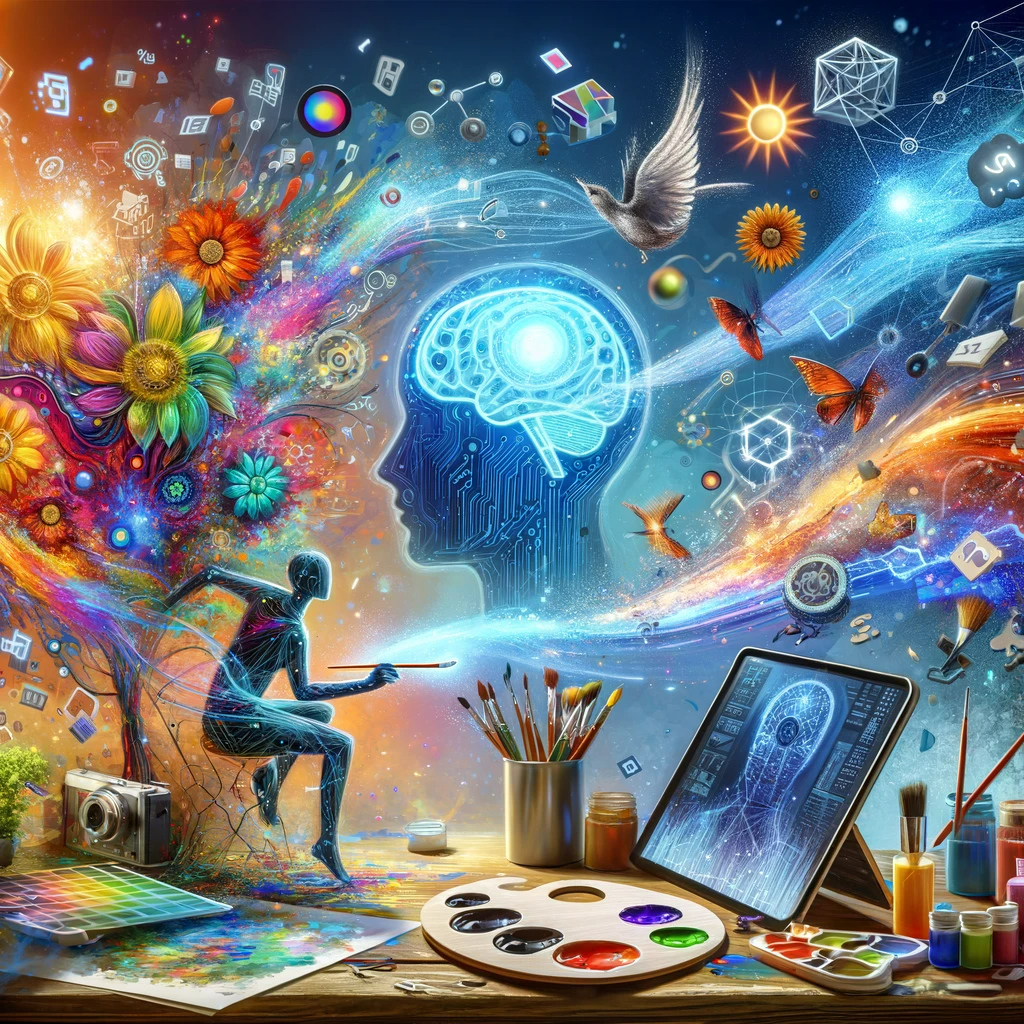Introduction: The Emergence of AI in Content Creation
In recent years, the digital realm has witnessed a seismic shift with the advent of Artificial Intelligence (AI) in content creation. This technological revolution has transformed traditional content creation processes, ushering in an era where AI tools aid in generating text, images, and even audiovisual content. This change is not just a fleeting trend but a new paradigm, significantly impacting marketers, content creators, and creative professionals.
AI Tools for Content Generation: A Marketer’s Guide
For marketers navigating this new landscape, understanding and leveraging AI tools is paramount. AI-powered content creation tools range from text generators, such as OpenAI’s GPT models, which can draft articles, emails, and social media posts, to image creation tools like DALL-E, which can generate visual content from descriptive text.
These tools offer unparalleled efficiency, allowing for rapid content generation that can keep pace with the ever-growing demand for fresh, relevant material. For instance, AI algorithms can analyze trending topics and keywords, helping marketers to create content that resonates with current audience interests.
However, the utilization of these tools requires a strategic approach. Marketers need to define clear objectives and understand the context and audience for which the content is created. AI tools can provide a base or a draft, but human insight is crucial for refining this output to ensure it aligns with brand voice and audience expectations.
Balancing AI and Creativity: Challenges for Creative Professionals
While AI tools bring efficiency and innovation, they also present challenges for creative professionals. One primary concern is the balance between AI-generated content and human creativity. There’s a fear that AI might stifle creativity, leading to a homogenization of content.
To address this, it’s essential to view AI as a collaborative tool rather than a replacement for human creativity. Creative professionals can use AI to handle mundane aspects of content creation, freeing up time and mental space for more creative and strategic tasks. This symbiosis can lead to more innovative and impactful content, combining the best of both worlds.
Furthermore, training in AI tools is becoming crucial for creative professionals. Understanding the capabilities and limitations of these tools enables creators to effectively integrate AI into their workflow, ensuring that the final content is both innovative and authentic.
Case Studies: Successful AI-Generated Content Examples
Several companies have successfully integrated AI into their content creation process. For example, The New York Times has experimented with AI to generate simple reports and news summaries, allowing journalists to focus on more in-depth reporting and analysis.
Another notable example is the use of AI in scriptwriting for advertising. Lexus used IBM’s Watson to analyze 15 years of award-winning commercials, cultural data, and social media preferences to script a highly successful car advertisement.
In the realm of visual content, companies like Adidas and Nike have used AI-generated designs for marketing campaigns and product designs. These AI designs were based on analyzing current fashion trends and customer preferences, resulting in highly appealing and successful product lines.
These case studies demonstrate AI’s ability to enhance content quality and relevance, enabling brands to engage with their audiences more effectively.
Conclusion: Ethical Considerations and Future Prospects
As AI-driven content creation becomes more prevalent, ethical considerations come to the forefront. Issues like content authenticity, intellectual property rights, and the potential misuse of AI for creating misleading or harmful content are critical concerns.
The future of AI in content creation is promising but requires a responsible approach. Industry standards and ethical guidelines need to be established to govern the use of AI in content creation. Moreover, as AI technology evolves, continuous learning and adaptation will be necessary for creators and marketers.
The integration of AI in content creation is not just about leveraging new technology but about embracing a new way of thinking and creating. It offers an opportunity to redefine creativity, enabling professionals to push the boundaries of what’s possible in content creation.
In conclusion, AI-driven content creation is a dynamic field with immense potential. It represents a new frontier in digital marketing and creative expression, promising a future where AI and human creativity coalesce to produce compelling, innovative, and ethically responsible content.
